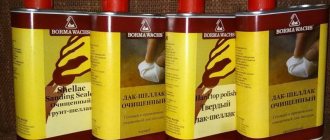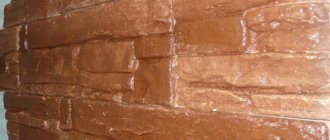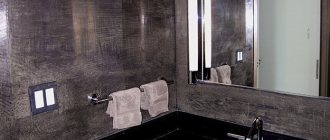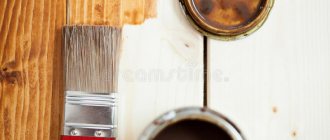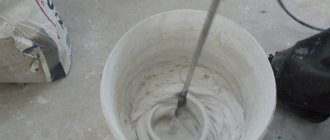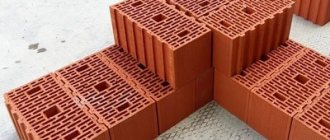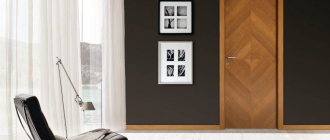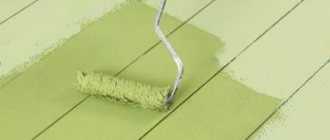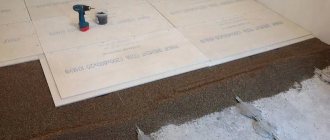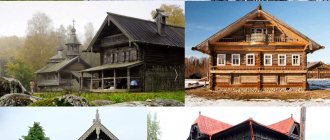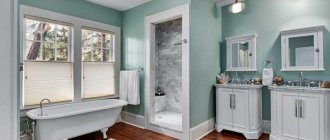External design is the face of the building and its “calling card”. In total, there are about five types of coatings, which are more or less widely used for finishing facades. In large cities, entire ensembles of houses are faced in the same way to maintain harmony. There are a lot of tiles near the historical centers of megalopolises, but cladding with decorative plaster is suitable for new buildings and expensive establishments in industrial centers. Conventional mixtures are placed almost everywhere, and in this regard, restrictions on the climate and the characteristics of the walls matter. Simple plaster will be transformed by a pleasant shade and inclusions of textured elements. Special options with enhanced protective capabilities are also available to consumers. Facade plaster for external use is sold at many retail outlets. There may be several of them on one square kilometer, so there is an option for any budget.
Peculiarities
Plaster for finishing facades is used to protect against moisture and noise. At the same time, the materials are subject to decorative requirements. Powders are made from the main composite material, additives, binding particles and fractions. At the same time, the most presentable options are with stone; some varieties of bark beetle and acrylic plaster are suitable for interior use. Stucco usually has at least some texture. At the same time, in our time they adhere to the following approach: a smooth coating for ordinary buildings and a shaped coating for expensive facades. The very definition of “plaster” can now be conditionally replaced with “finishing for external work”. Transmittance property is important for the material. Plaster should not allow moisture and noise from the outside to pass through and heat from the inside, and, on the contrary, allow steam to pass through the walls.
Silicate mixtures
It is produced on the basis of “liquid glass” and is also sold in ready-made form. The properties are excellent: vapor permeability, water repellency, elastic, easy to care for.
The disadvantages include the need to prepare the surface, priming is mandatory, as well as some capriciousness in the work, which requires experience and skill from the master.
Insulators ShF-20G- Production of plastic for finishing
How and how to caulk a timber house with your own hands: materials and step-by-step instructions
Advantages and disadvantages
Plaster protects the inside of the building from adverse natural factors and decorates the walls - this is its main purpose and at the same time a plus. Putty provides savings compared to tiles, panels and other options for wall coverings. In addition, the application scheme is simple in terms of performing individual steps. There is no need to repeat the cycle several times, starting all over again. Thanks to this feature, efforts can be directed towards creation: the formation of patterns and relief. At one time, application methods were developed, and now they continue to develop. Despite the benefits of wall insulation, plaster has some minor disadvantages. Dismantling will cost considerable effort and time. The surface for some types of mixtures will need to be pre-cleaned of dirt, but for large areas this is difficult.
Fur coat for home
Do you like fur coats? Better yet, give it to your wife! This type of plaster is gradually becoming a thing of the past.
On small buildings, the fur coat does not look very neat, even rough. However, the texture of a fur coat gives large country houses, estates or administrative buildings a special charm and a certain antique quality.
This type of plaster consists of dolomite chips up to 3 mm in diameter. Apply with a roller or trowel, forming pointed edges similar to wet short fur.
Kinds
Plaster can be cement, silicate, acrylic, silicone, mineral, terrazite, cork and other types. They differ to one degree or another in external characteristics, decorativeness, price and performance indicators. Manufacturers rarely manage to combine all the advantages in one option, especially while keeping its price at the level of the market average. The scope of application requires materials to be resistant to thermal and chemical influences, as well as the ability to transmit steam and moisture resistance. Ordinary plaster should first of all protect the building from moisture penetration. Decorative varieties are often used on top or instead of the usual mixture. Special options perform a shielding function. Provide reliable protection against physical and chemical factors. Special ones are often added to decorative mixtures.
Cement
Several varieties are called this way. The market is dominated by cement-lime and cement-sand options. It is the fillers that determine the basic properties of the raw material and, accordingly, the scope of application. Options with sand are cheaper, and more expensive putty with lime is used in rooms with high humidity. The second option will cost more, even if you prepare the putty yourself. Each of the materials is saturated with sand and lime, so that the mixtures, in fact, differ in the proportion of the main components. According to their purpose, they are divided into decorative, leveling (regular) and special. The latter type is associated with the creation of warm plasters, as well as coatings with enhanced resistance to external factors. Cement plaster has decent indicators of vapor permeability, heat resistance and chemical resistance.
Silicate
The binding function in the mixture is performed by liquid potassium glass. The base consists of minerals. As a result of mixing the components, raw materials with high moisture permeability are obtained. At the same time, the combination cannot provide a normal level of elasticity. The shrinkage of the building will lead to the formation of cracks. A slight earthquake will cause the facing layer to fall off. Silicate plaster is useful for finishing facades near busy roads and highways, but only in flat areas. Special care for the coating is not required, and this despite the fact that the solution fits perfectly on textures of any complexity - such as cellular walls and decorative options. Shell rock is best combined with the material. Finished raw materials are produced in a wide range of shades. Silicate putty is easy to use, but applying it over another layer of plaster will cause cracks.
Acrylic
Apply only to a smooth surface or leveling layer. Acrylic plaster is laid in a thin layer to ensure the main advantage of the material - high elasticity. Moreover, even a small layer of acrylic solution will be resistant to mechanical wear of varying degrees. The integrity of the cladding will remain even after slight shrinkage. At the same time, acrylic putty belongs to the above-average price category, and is also suitable for a limited area of application. For example, due to low vapor permeability, it is better not to use it in hot regions. And the optimal place for use is considered to be vapor-permeable systems made of polyurethane foam and expanded polystyrene. Dust and dirt strongly stick to the coating, so acrylic raw materials will not be the best solution for houses directly near highways and dirt roads, especially if there are no opportunities for washing under high pressure.
Silicone
The option is not cheap, and it is used for finishing “like” stone or some kind of rock. The base is designed to add small particles: from quartz sand, for example, the coating takes on the appearance of stone. The raw materials are used for facades and premises. Plaster looks organically in any interior: from the simplest to the most expensive. At the same time, the outside of the building will be thoroughly cleaned by regular rain, and the inside will be washed with clean water without detergents. The surface under the silicone putty breathes normally and does not suffer from harmful microorganisms. Silicone plaster does not absorb salt, so unpleasant salt solutions do not form on it. Silicone surfaces also have the ability to self-clean. The range of colors and shades includes ready-made solutions, but consumers often resort to tinting the usual white mixture.
For the leveling lower layers, it makes sense to use other materials - this will significantly reduce the final costs.
Mineral
This variety is classified as a dry type of mixture for dilution with water. Mineral plaster is made from cement. Plasticizers and modifiers are added to the raw materials. The material is relatively inexpensive, and this, along with its strength, makes the option profitable in its own right. The putty adheres tenaciously to the base, practically does not absorb moisture, has high vapor permeability, and tolerates frost well. Among the weaknesses of mineral plaster is the small choice of colors. To give the walls a special shade, you will need tinting. Elasticity indicators are also low. If the building shrinks, cracks will appear in the finish. Recently, they began to produce mineral putty based on gypsum. In terms of basic qualities, such solutions are inferior to other types of plaster. Mineral mixtures are also made from:
- liquid glass;
- lime
Terrasite
The material performs decorative and protective functions. The range of terrasite plaster includes many different compositions, among which a mixture of fine limestone flour, Portland cement and fluff lime is popular. Instead of limestone chips, coarse purified sand is sometimes used as a filler. The mixtures usually contain additives such as mica chips. Buyers can choose the desired option for transportation directly to the construction site: they sell terrasite plaster only in the form of a dry mixture, and add water just before application. Most varieties are used externally, because the resulting texture turns out to be too textured for interior finishing standards. You can find an option for rooms if you select putty with small fractions and a suitable pattern after hardening.
Cork
A relatively new type of decorative finishing plaster with a special composition. The basis of the raw material is cork oak bark, and additives and binders are selected according to its characteristics. The properties of cork will also be obtained by the finished coating: antistatic, hypoallergenic, elastic, soft. The variety was developed to replace traditional options with increased decorativeness. Cork plaster is used instead of wall and ceiling cladding, thin insulation, paints, liquid wallpaper, interior and facade decoration. Among other things, it will act as water and sound insulation and increase the strength of wall materials. The described benefits will be available for at least 15 years - that is how long the integrity of the structure is maintained. Gaps are also filled with natural cork putty. It is used in repair work and finishing of the following types of buildings:
- Made from expanded clay blocks;
- Foam concrete;
- Aerated concrete;
- Panel.
Thermal insulating
The warm type of plaster appeared relatively recently. Thermal insulating putty was obtained by modernizing the composition. Quartz sand was replaced with elements to contain heat: expanded polystyrene, pumice, expanded vermiculite, expanded clay and other materials. Packaged air almost always plays the role of an insulating barrier for a room. In the warm type of plaster, the appearance of cold channels is prevented by polystyrene foam and expanded vermiculite, which are characterized by attracting and retaining air bubbles. High adhesiveness is ensured by universal properties in terms of compatibility with surfaces. A layer of plaster 5 cm thick corresponds to a sheet of polystyrene foam with an index of 4 cm and one and a half rows of bricks. A perfectly even base coat is not required for the work, and more than 100 m² can be applied at a time.
Other strengths:
- ease of preparation;
- fire safety;
- environmental friendliness.
Soundproof
Such materials are used in libraries, consulting, office centers, restaurants, and industrial premises near residential buildings. Soundproofing mixtures are saturated with light fillers, divided into granules. Additives with a hollow structure are used for this. For soundproofing properties, the mixtures are also saturated with aluminum powder. The latter, as a result of drying the plaster, emits gas to form a porous structure. In the loose structure of the plaster, the sound bounces off small particles and eventually weakens to a minimum level. At the same time, the preservation of properties depends on the choice of decorative layer, if one is planned. Thick enamel paints will definitely ruin the effect. It is generally better not to use paints and varnishes, as they penetrate into the porous layer and clog some of the pores.
Mosaic
An interesting type of decorative facade plaster that deserves special attention. As a rule, mosaics are made from silicone or silicate plaster with the addition of coarse inclusions in the form of crumbs from 0.8 to 3 mm.
This crumb can be made of marble, granite, quartz and even semi-precious stones - lapis lazuli, charoite and malachite. Here you do not need to create a pattern on the facade with your own hands. The texture and unique pattern is created by itself thanks to colored inclusions of stones.
Application area
Facade plaster, as its name suggests, is used for building surfaces and street architecture. At the same time, the appointment of decorative and special varieties for facades is advisory in nature. Improved materials are suitable for bathrooms and rooms with swimming pools. Bark beetle and variants with pronounced relief are used to decorate facades and large rooms. In an ultra-modern environment, such putty would look out of place. But with a certain presentation of an ordinary or classic interior, it looks more expensive than its price. Different types of plaster are used to treat gaps and seams, decorate external insulation, and imitate natural materials, such as stone or precious rocks. For temperate climates, acrylic “lamb” plaster is considered universal. There are mixtures on sale for working with any surface.
Wet type of plastering of external walls
Fastening heat-insulating material, reinforcing mesh, finishing material using watery or semi-solid materials is called wet plaster. In this case, the dew point is located outside the building, due to which the climatic conditions in the building become more favorable.
The insulation is most often fixed using cement mortar, which ensures a reliable connection between the wall and the insulating material. The base layer is a rigid layer. It serves to prevent external influence on the insulation. Made from cement-containing mortar or reinforcing mesh. The decorative layer is the external plastering of the prepared surface. If necessary, texture and coloring of the plaster is created.
Design, texture and color
Based on texture and appearance, there are several notable categories:
- bark beetle;
- plaster coat;
- mosaic options.
Decorative plaster has long taken a leadership position, displacing simpler options like fur coats. Requirements for facade coatings are constantly growing, and this contributes to this state of affairs. Buildings are often finished with slabs, but most people focus on plaster. The texture of the material can be granular, with voids, grooves, etc. The relief depends on the application technique and the raw material itself. The first of these aspects also affects the configuration of the three-dimensional drawing. What matters is the pressure force, the nature and amplitude of the movements, the angle of inclination and the type of tools. The texture is created by the components of the solutions: cellulose and silk fibers, ground mica, marble chips, various fractions. Shades play a role in the transmission of texture and perception of the coating. Iridescent color options will highlight the relief, and in principle, they look better. There are also white and simple colored plaster, coatings with a play of light and shadow.
Bark beetle
The material is produced in white or another base color for the subsequent addition of pigments. After hardening, the bark beetle can be additionally painted with water-based or silicone-based materials. The peculiarity of the finishing is the formation of a pattern that visually resembles the activity of a bark beetle. Round particles with a selected size move through the applied mass and leave grooves. Because of its decorative properties, the bark beetle is also used inside buildings. Before purchasing a finishing material, you should inquire about the vapor barrier characteristics of a particular option. Other useful qualities are present in all mixtures. The bark beetle has gained a position in the market due to its impact resistance, resistance to cracking and peeling, and frost resistance. The coating will retain its original appearance for a long time.
Fur coat
A simple and cheap option for improving facade surfaces. Fur coats protect walls from precipitation and insulate houses. Initially, the material was used in the same way: thrown on in a large layer, leveled and given a certain texture. This is the difference between all ordinary plasters and decorative plasters with their original properties. New cement-sand compositions of the fur coat variant remain the cheapest, but in addition to coarse sand, there are now raw materials with fine quartz. The fur coat provides heat and sound insulation at the proper level, and thanks to the first of the qualities, it got its name. It attracts craftsmen with its simple application technology. And if you add a hand-held machine or a pneumatic gun to the work, then in a short time you will be able to cover 200 m² - doing everything with your own hands and without the help of craftsmen. Recently, more and more color options have appeared. To improve aesthetics, decorative spraying is done.
Mosaic
Mixtures of crushed pieces of stone and acrylic resin are used for decorative purposes. The option is considered a designer one and, in addition to facades, it is used to decorate expensive interiors. Mosaic material is placed on the plinths of private houses and architectural compositions. Inclusions for plaster are obtained from granite, marble and quartz. Microfragments of other breeds are often added to add variety to the color scheme. Artificial lighting creates pearlescent accents on the mosaic surface. The diameter of these fractions is 0.8-2 mm, and when crumbs accumulate, characteristic multi-colored spots are formed. The variety of backgrounds is also unlimited, but the predominant colors are white, pink and yellow. Resistance to temperature fluctuations and resistance to external influences justify the widespread use of the material. It is applied to gas and foam concrete, other plaster, natural stone, plasterboard, and brick.
Decorative plaster for the facade from A to Z
Have you finally decided to renovate your facade and are scouring the Internet looking for information on what decorative plaster for facades is?
You can read about the Italian origin of the word “plaster” and about its first varieties in the history of mankind on all other construction sites, if of course you are interested and important to know. And here we talk about real life and topical issues about painful issues.
Anecdote from life:
About quality... Masons: “Nothing, they’ll level it with plaster...” Plasterers: “Nothing, they’ll level it with putty..” Finishers, putting putty, “Nothing, they’ll level it with wallpaper...
Unfortunately, this happens in 90% of all houses built. When deciding to finish a wet facade, that is, decorative facade plaster, the owner of the house needs to know all the intricacies of this matter.
Application rules and techniques
Before finishing with plaster mixtures, prepare the surface carefully and without haste. Be sure to remove any remnants of the old finish. Find the most protruding point on the wall. If you do not reduce this part of the coating, you will need to apply plaster up to this level. Defects must be taken into account: a depth of up to 3 cm is considered acceptable. The recesses are simply covered with the mixture, and if the indicator is higher than normal, additional layers of plaster will have to be formed. Then they move on to priming. A special solution is applied with a roller to increase adhesiveness. Sometimes one layer is enough, but it is better to do two. The plaster itself is applied with a spatula, leveling the coating and its subsequent processing. The finishing layer is placed at an angle of 60°. Decorative materials are applied with a roller, brush, spatula, brush or trowel, or again with a spatula, if the design requires it.
Nuances of application technique:
- The solution is placed in a layer of 0.3-1.5 mm.
- Each new layer is dried for at least 30 minutes at a temperature above +20 °C.
- The final coating is applied no earlier than three days after the previous manipulations, and only on a dried surface.
Application to insulation - mineral wool or polystyrene foam
Mineral wool can be covered with plaster if the insulation density is 150 kg/m³ or more. A layer of glue is applied to the mineral wool and then an alkali-resistant fiberglass construction mesh is pressed into the resulting layer and insulation. When the structure is assembled, it can be plastered, painted, etc. After applying the glue, the surface should be reinforced with umbrella dowels for greater reliability: one in the center and the same number along the edges of the surface is enough. If the glue layer has minimal unevenness, then add another one for leveling. A plaster mesh with appropriate fastening is first installed on the layer of foam insulation. Then mashing is carried out on it. After completing the first two stages, they begin to level the coating. The layer is laid out and rubbed. The resulting surface is primed. Then all that remains is to apply the finishing coat.
Plastering brickwork
The process includes standard surface treatment steps:
- Inspection;
- Preparation;
- Padding;
- Reinforcement;
- Installation of beacon strips;
- Application of finishing material.
First of all, remove dirt and dust, eliminate cracks at the joints. Sound insulation and protection against heat loss depends on the integrity of the coating. In general, insects may remain in the cracks, which will destroy the finish in the future. The surface is then primed. Before applying porous plaster compositions, a deep penetration primer is used. Usually two layers are applied. The brick surface has an uneven topography, so it is better to play it safe and organize a reinforcing mesh. As a material for the frame, it is better to choose a non-corrosive substance, for example, plastic. From the reinforcing structure, rust can transfer to the finish and thus cause stains. The defect cannot be corrected. Subsequently, metal profiles are installed as beacons. When the desired layer of plaster is on the wall, the planks are removed.
Applying plaster to aerated concrete blocks
Aerated concrete easily absorbs moisture, so finishing begins with protecting the blocks from getting wet. In warm regions this is not important, but winter with negative temperatures will lead to freezing of moisture in the blocks. As a result, the building material’s resistance to loads will decrease. Aerated concrete walls are plastered only in the warm season. If the seams were filled not with special glue, but with concrete-sand mortar, then they will wait a week longer before starting work. Next, the surface of the wall is saturated with a deep-action primer and, if possible, covered with polyethylene. Some experts are inclined to believe that aerated blocks should be finished both from the outside and inside. Then the finishing begins with the premises, and only then, when the internal lining has dried well, the facade is plastered. Applying plaster to aerated concrete blocks, in addition to the standard stages of base preparation and priming, includes the formation of a “fur coat” and strengthening of corners.
Houses on the seashore, lake or river require less interior finishing.
Finishing of wooden facades
Plaster for external walls is applied to houses made of timber, less often - to buildings made of sip panels, logs and other types of wooden buildings. Before cladding, even fully finished boards are treated with antiseptics against insects and fungi. The first layer will be waterproofing. For log houses you will need a reinforced system. Then a reinforcing façade frame is installed and several layers of plaster are applied. Then the beacons are removed from the sheathing. Experts allow the use of acrylic solutions, as well as mineral varieties. These materials have high breathability and are resistant to mechanical damage. To finish a wooden surface, it is better to use ready-made mixtures without tinting. The plaster is selected to match the tone of the wood, because if the shade does not match, the surface will look sloppy. Instead of plastering, they often resort to installing curtain facades. They improve temperature exchange and withstand cold and heat.
Another creepy story about how Andrey plastered a wooden house.
Here's another façade horror story. One day a customer called us and introduced himself as Andrey. He said that he had a large and good frame-and-panel house. But he always dreamed that the house would look like an estate, in a classic style. And Andrey asked to insulate his house and decorate it with a plaster facade.
And our facade specialist Alexey told Andrey that he shouldn’t decorate his wooden house with plaster, something bad might happen, the plaster might peel off.
Andrey did not listen and called another company, where they did not refuse him, but gladly did the insulation with a wet facade, as Andrey had always dreamed of.
Not even a year has passed, and only one winter has passed, and Andrei is crying bitter tears. His beautiful plaster facade was cracked, and he paid a lot of money for it. Now Andrey will live in this house and look at the cracks and chips for many years.
And now closer to reality. What was wrong? Construction materials are of high quality. Resin-based facade paint. Professional facade designers from a construction company. The weather was great. Why then did the façade crack?
Alexey told Andrey that it is better to clad wooden houses with siding rather than decorative plaster. The fact is that wood absorbs moisture from the air and periodically swells. Wooden walls “breathe”, contracting and expanding in their structure due to changes in temperature and humidity. Due to such physical instability of the walls, there is always a risk of deformation of the plaster layer. Which is exactly what happened.
The moral of this tale is this - if you have already built a house from wood materials, do not create illusions about the classic plaster facade. Your option for insulation and cladding is siding.
Calculation and material consumption
Before purchasing, you should calculate the consumption per 1 m² - calculations are carried out in the plaster calculator. The fields should be filled in taking into account the average curvature of 1 meter. In the first column, indicate the length of the wall in meters, and in the second, enter its height. Then add the average thickness of the plaster layer in millimeters. At the end, the type of mixture is indicated, for example, acrylic or silicate, etc. The result can be obtained in kilograms or in bags if you enter the mass of one. The consumption of plaster largely depends on the surface material and its curvature. For walls made of plasterboard, wood, brick and concrete, the indicators are significantly different. The approximate costs of each mixture per 1 m² are indicated on the packaging, so you will need to convert this into coefficients and multiply by the corresponding parameters of the base. The average level of coating deviation is usually in the range of 20-25 mm.
The average level of curvature is calculated per 10 m², measured at 3 points.
Mistakes when working with plaster
There are several common mistakes that beginners make when plastering facades. Among them are the following:
- Ignoring the primer. The walls must be primed first, as this improves the adhesion of the mortar. Without a primer, the plaster will begin to peel off faster.
- Incorrect preparation of the mixture. When creating the working mixture, you must follow the instructions on the packaging. A solution prepared inappropriately will not adhere well to the wall.
- Applying a thick layer. The coating should not be too thick so as not to sag under its own weight.
Plastering a facade is not an easy job that requires appropriate knowledge and skills. Every person who decides to do this on their own should become familiar with the features and methods of applying plaster.
How to choose the right one
The right choice begins with an analysis of priorities. The appearance, quality of the material and technical capabilities for its use always come to the fore. They take into account climatic features, wall parameters, cost and deadlines. Having worked through each scenario from start to finish, you can accurately predict that the option will fail in principle or after a short period of time. Silicone and silicate plaster are suitable for places with increased pollution. These compounds are also used to restore old buildings. Silicone mixtures will be relevant for cold regions. In other cases, acrylic or cement putty will be sufficient. Criteria for the correct choice include parameters of mixture consumption, fraction size, ease of preparation, as well as color palette and storage conditions.
Bark beetle
Many residents of Moscow and the Moscow region are confident that the bark beetle has “lost” its position and is no longer in trend. In our region, perhaps, this is the case. Owners of private houses prefer pebble texture rather than bark beetle. However, traveling around the Volga region and the North Caucasus, we noticed that most houses are decorated using the “bark beetle” texture.
It is difficult to say why regional trends are so clearly visible, but one thing is clear - the bark beetle is loved by the people and will enjoy deserved popularity for a long time.
Bark beetle is a facade decorative plaster that imitates the surface of a tree affected by the bark beetle. The texture is made in the form of vertical, horizontal or wave-like patterns.
Designer tips for choosing decorative facade plaster
The choice of one or another texture of decorative plaster depends on the style of construction, its purpose and the overall design of the house. For example, smooth plaster is ideal for a German-style home.
A large rectangular house in the “family estate” style will look beautiful with fine-grained pebble plaster up to 2 mm in diameter.
In any case, modern technologies and a wide variety of offers will always find their customer. Decision is on you. One thing is constant - decorative plaster for the facade will make your home beautiful and unique.
